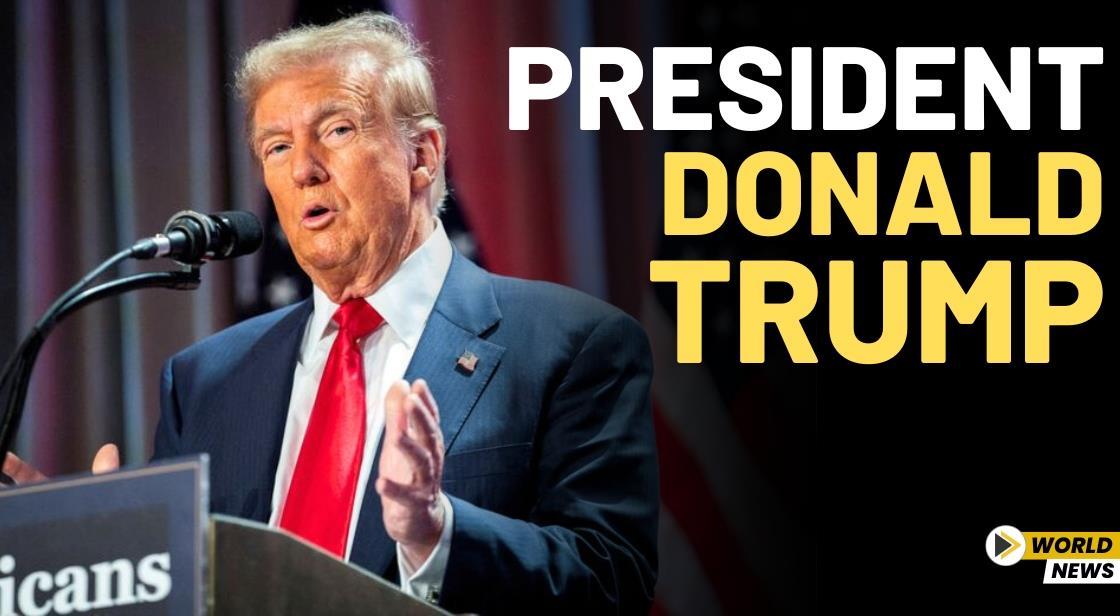Donald Trump Set to Announce Country-Based Tariffs in Major Trade Policy Move

News Synopsis
U.S. President Donald Trump is set to announce a major shift in trade policy by unveiling a plan for country-based tariffs on April 2 in the White House Rose Garden. The move is expected to have significant implications for global trade and international economic relations.
What We Know About Trump’s New Tariff Plan
White House Press Secretary Karoline Leavitt confirmed that the forthcoming announcement will focus on "country-based" tariffs. While the administration is also considering "sectoral duties," these will not be the focus of the April 2 event.
“The president will be announcing a tariff plan that will roll back the unfair trade practices that have been ripping off our country for decades,” Leavitt told reporters at the White House. “It’s time for reciprocity, and it’s time for a president to take historic change to do what’s right for the American people.”
Which Countries Could Be Affected?
While Leavitt did not disclose specific details on tariff rates or the countries that will be impacted, she hinted that the European Union, Japan, India, and Canada are likely to be among the targets.
“This makes it virtually impossible for American products to be imported into these markets, and it has put a lot of Americans out of business and out of work over the past several decades,” Leavitt explained.
U.S. President Donald Trump himself has stated that he intends to impose tariffs on “all countries,” dismissing speculation that the scope of the announcement might be limited. However, he remained vague when asked whether the tariffs would be universal or country-specific, saying, “You’re going to see in two days, which is maybe tomorrow night or probably Wednesday.”
Reciprocal Tariffs: Trump’s Justification
Trump has positioned his tariff plan as a form of "reciprocity," arguing that U.S. businesses have been unfairly disadvantaged by high import duties imposed by foreign governments.
“They’re reciprocal. So whatever they charge us, we charge them, but we’re being nicer than they were,” he stated. “They took advantage of us, and we are going to be very nice by comparison to what they were. The numbers will be lower than what they’ve been charging us, and in some cases may be substantially lower.”
Potential Impact on Global Trade
Trump has presented these tariffs as part of his broader economic agenda aimed at:
-
Rebalancing global trade by eliminating unfair trade practices.
-
Boosting U.S. manufacturing through increased domestic production.
-
Generating government revenue to fund domestic initiatives, including tax cuts.
However, the move has also raised concerns over potential economic disruptions. The uncertainty surrounding these tariffs has already contributed to volatility in global markets, with Wall Street experiencing a weeks-long selloff.
Previous Tariff Actions and What’s Next?
The new announcement follows Trump's earlier imposition of tariffs on major U.S. trading partners, including Canada, Mexico, and China. His administration has also levied duties on automobiles, steel, and aluminum, with additional tariffs on copper, pharmaceuticals, semiconductors, and lumber being considered.
Leavitt dismissed concerns about Wall Street’s reaction, saying, “Wall Street will work out just fine in this administration, just like they did in the first term.”
As the world awaits the details of Trump’s April 2 announcement, investors, business leaders, and policymakers are bracing for potential trade disruptions that could reshape international commerce in the coming months.
Conclusion
Donald Trump's upcoming April 2 tariff announcement is set to introduce country-based reciprocal tariffs, aiming to counter long-standing trade imbalances and protect U.S. industries and workers. While the details remain uncertain, the global trade landscape is expected to shift significantly, with major economies like the European Union, Japan, India, and Canada likely to be affected.
The policy has sparked concerns over potential disruptions to supply chains and price hikes for consumers, contributing to volatility in financial markets. However, the Trump administration insists that these tariffs will rebalance global trade, boost domestic manufacturing, and generate revenue for key national priorities, including tax cuts.
As the world awaits the official announcement, investors, businesses, and policymakers will be closely monitoring the impact of these tariffs on international trade relations, economic growth, and market stability. The coming weeks will be crucial in determining how trading partners respond and whether the U.S. can successfully implement its reciprocity-driven trade policy without triggering further global economic uncertainty.
You May Like









